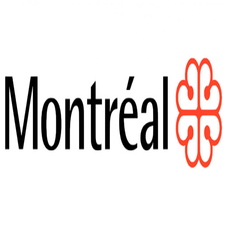Feu
Type of resources
Topics
Keywords
Contact for the resource
Provided by
Formats
Representation types
Update frequencies
status
-

Inventory of fire hydrants located on the territory of the City of Longueuil and its positioning.**This third party metadata element was translated using an automated translation tool (Amazon Translate).**
-

Map of Quebec City fire hydrants**This third party metadata element was translated using an automated translation tool (Amazon Translate).**
-

This file contains the location of all traffic lights managed by the City of Montreal. The file contains the reference number of the intersection where the light is located, the names of the two streets that form the intersection, and the geographic coordinates of the center point of the intersection.**This third party metadata element was translated using an automated translation tool (Amazon Translate).**
-

__The link: *Access the data directory* is available in the section*Dataset Description Sheets; Additional Information*__. The forest fire map shows forest fires that occurred mainly in the territory of southern Quebec, i.e. the area located south of the territorial limit of attributable forests. This map data makes it possible to improve knowledge about fire regimes and to meet the specific needs of special management plans following forest fires. They can also be used to meet a variety of study and research needs, such as analyzing the impact of climate change, modeling post-fire regeneration, and studying ecosystem dynamics. This information is obtained from and produced from a variety of sources, including satellite images, aerial photographs, field or aerial surveys, fire scar dating, and archival documents. This data contains four types of mapping as well as fire regime mapping: • **Detailed fire mapping, from 1976 to today**. This mapping includes burn types, total burn and partial burn, when information is available. In addition, for fires that have been characterized, information on the classes of burning patterns is added. The minimum mapping area can be up to 0.1 ha, depending on the source products used. This map is partially available for sectors located in the north of southern Quebec. • **Mapping the simplified contours of fires, from 1972 to today**. This map shows the external contours of fires (without fragmentation), in order to represent them globally in a product that can be easily used and integrated into current information systems, GPS or others. Resulting from the fusion of detailed fire mapping, this product was designed to meet various customer needs. This map is partially available for sectors located in the north of southern Quebec. • **The mapping of the points of origin of fires** having been listed by the protection organizations (e.g.: SOPFEU) for the period from 1972 to the present. This mapping includes the date, the source of ignition (human or lightning) and the protection zone. It is available for the whole of Quebec. • **The mapping of ancient fires concerns fires that occurred between the very end of the 19th century and 1975**. This mapping comes from the information present on the forest maps of the first and second inventories, as well as from the information contained on the ecoforest maps of the third and fourth inventories. The dating of these fires is done using various methods, including the analysis of study trees bearing fire scars and the consultation of archival documents. These data are available for the following regions: Saguenay-Lac-Saint-Jean (02), Bas-Saint-Laurent (02), Bas-Saint-Laurent (01), Gaspésie-Îles-de-la-Madeleine (11), Abitibi-Témiscamingue (08), Mauricie-Centre-du-Québec (02), Mauricie-Centre-du-Québec (02), Bas-Saint-Laurent (01), and Lanaudière-Laurentides (14-15). • **Mapping fire regimes in southern Québec**. This map shows 13 zones with distinct fire regimes. These areas were delineated based on available information on the areas burned during the period 1890-2020 and other potentially decisive environmental variables, such as physiography, the abundance of different tree species known to be dependent on fire as well as the location of natural and anthropogenic ignitions. Fire regime mapping covers all forest areas under management as well as a more northern portion that is not managed. The detailed methodology is presented in Forest Research Paper no. 189 “Zoning fire regimes in southern Quebec” (coming soon). This zoning may be useful to ensure better consideration of the risk of fire in a forest management context. It can also serve as a territorial basis for projecting future fire activity taking into account various factors, such as climate change, fire suppression as well as changes in the types of fuels and their distribution on the territory. **This third party metadata element was translated using an automated translation tool (Amazon Translate).**
-

__The link: *Access the data directory* is available in the section*Dataset Description Sheets; Additional Information*__. The **up-to-date ecoforest map (formerly “with disturbances”) ** is the result of the interpretation of aerial photographs and control points in the field as part of the ecoforest inventory of southern Quebec. This mapping presents the various forest and ecological characteristics of the forest territory and corresponds to the portrait of the forest up to the year in which the aerial photograph was taken (mapping cycle of about 10 years). Next, the outlines and nature of recent disturbances (forest interventions, fires and other disturbances) are then integrated annually. The fifth mapping cycle has been under way since 2015. This map covers almost all of the territory south of the 52nd parallel of Quebec's public and private forest. It is distributed by map sheet at a scale of 1/250,000. The minimum mapping area is 4 ha for stands and 0.1 ha for disturbances. __ ⚠️ 1) Note that__ the disturbance maps used to update the updated ecoforest map are also distributed separately on Data Quebec. Here is the list of these maps: + ** [Forest fires] (https://www.donneesquebec.ca/recherche/dataset/feux-de-foret) ** + ** [Harvesting and other silvicultural interventions] (https://www.donneesquebec.ca/recherche/dataset/recolte-et-reboisement) ** + ** [Epidemics, windfalls and ice storms] (https://www.donneesquebec.ca/recherche/dataset/epidemies-chablis-et-verglas) ** + ** [Forest Infrastructure] (https://www.donneesquebec.ca/recherche/dataset/infrastructures-en-milieu-forestier) ** __ ⚠️ 1) Note that__ disturbances are prioritized according to the nature of the layer and respect for the chronology of events. Only the last original or partial disturbance is kept in the updated ecoforest map. You should refer to the annual update layers, listed in __Note 1__, to have access to the full history of disturbances.**This third party metadata element was translated using an automated translation tool (Amazon Translate).**
 Arctic SDI catalogue
Arctic SDI catalogue